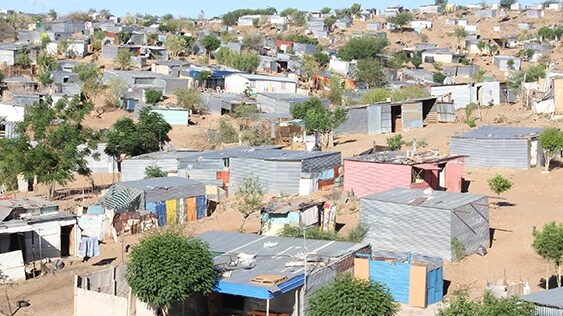- TOGO GOVT. SEEK CIVIL ENGINEERS FOR STEEL-CONCRETE BRIDGE PROJECT
- GHANA MINISTER CALLS FOR COMPLETION OF GARID PROJECT AIMED RAINY SEASON
- MPILO HOSPITAL IN NEEDS OF MASSIVE INFRASTRUCTURAL CHANGE IN ZIMBABWE
- HOW MDCB BAIL OUT BOSTWANA MINERGY OVER LOST OF COAL PRODUCTION
- WHY ACCESS TO WATER IS STILL A MAJOR ISSUE IN AFRICA
NAMIBIA HOUSHOLDS FACING TOUGH FINNACIAL TIMES

Households are facing a challenging environment, as the rising cost of living combined with tighter monetary policy this year has added to budgetary pressures.
Credit extended to the private sector grew by 4,0% year on year (y/y) in July compared to 3,4% y/y in June, with net household debt increasing by 2,1% y/y in July compared to 2,0% y/y in the prior month, whereas net corporate debt increased by 6,5% y/y in July compared to 5,3% y/y in the prior month.
Corporate credit growth was supported by higher demand from businesses in the transport, mining, health, and services sectors, according to the Bank of Namibia.
An analysis by Simonis Storm Securities says year to date, 2022 has recorded the worst annual growth rates in household credit, whereas it has been better than in recent years for corporate credit.
Improved credit growth in 2022 stems mainly from corporate credit growth. Year-to-date credit extension averages 3,3% compared to 2,4% in 2021.
“Disaggregating the data, we see that household credit growth was mainly driven by other loans and advances, going up 7,9% y/y in July 2022 and mortgages rising 1,9% y/y in July 2022, which collectively account for 86,1% of household credit growth.
“Accounting for 45,8% of corporate credit growth, other loans and advances rising 15,7% y/y in July 2022 and installment and leasing going up 14,9% y/y in July 2022 were the main drivers of growth in corporate credit,” said Simonis.
Overdrafts continue on a declining trend for households, dropping 10,7% y/y in July 2022, and corporates down 6,1% y/y in July 2022.
In 2021, net investment was focused on the mining (32,3%), financial services (17,6%), manufacturing (15,9%), service providers of government (14,4%), and agriculture (7,9%) sectors of the economy.
In addition, most of the net investments in 2021 were spent on machinery and equipment (34,7%), buildings (24,5%), and construction works (18%).
Whereas excess credit growth above gross domestic product (GDP) growth indicates most loans were used for consumption purposes, excess gross fixed capital formation (GFCF) growth above GDP growth could potentially indicate that an inefficient allocation of resources has largely been taking place.
This is due to net investment not translating into higher economic growth rates over the last 10 years. GFCF averaged annual growth of 20,4% but GDP only averaged 7,4% between 2011 and 2021.
Household and corporate debt stock, as a percentage of GDP, currently constitutes 34,4% and 25,4%, based on the latest 2021 national account data.
“Combining households, corporates, and foreigners who live in Namibia and have outstanding debt with our local banks, we see that total private sector debt is 59,8% of GDP. This compares marginally lower than the 69,1% for total (domestic and foreign) government debt as a percentage of GDP
“We expect another 100bps hike in the repo rate before the end of 2022, which would lift the prime rate from 9,25% to 10,25%. Rising interest rates will likely weigh on demand for credit, more so for households than corporates as we have seen in recent months,” said Simonis.
SOURCE: The Namibian

